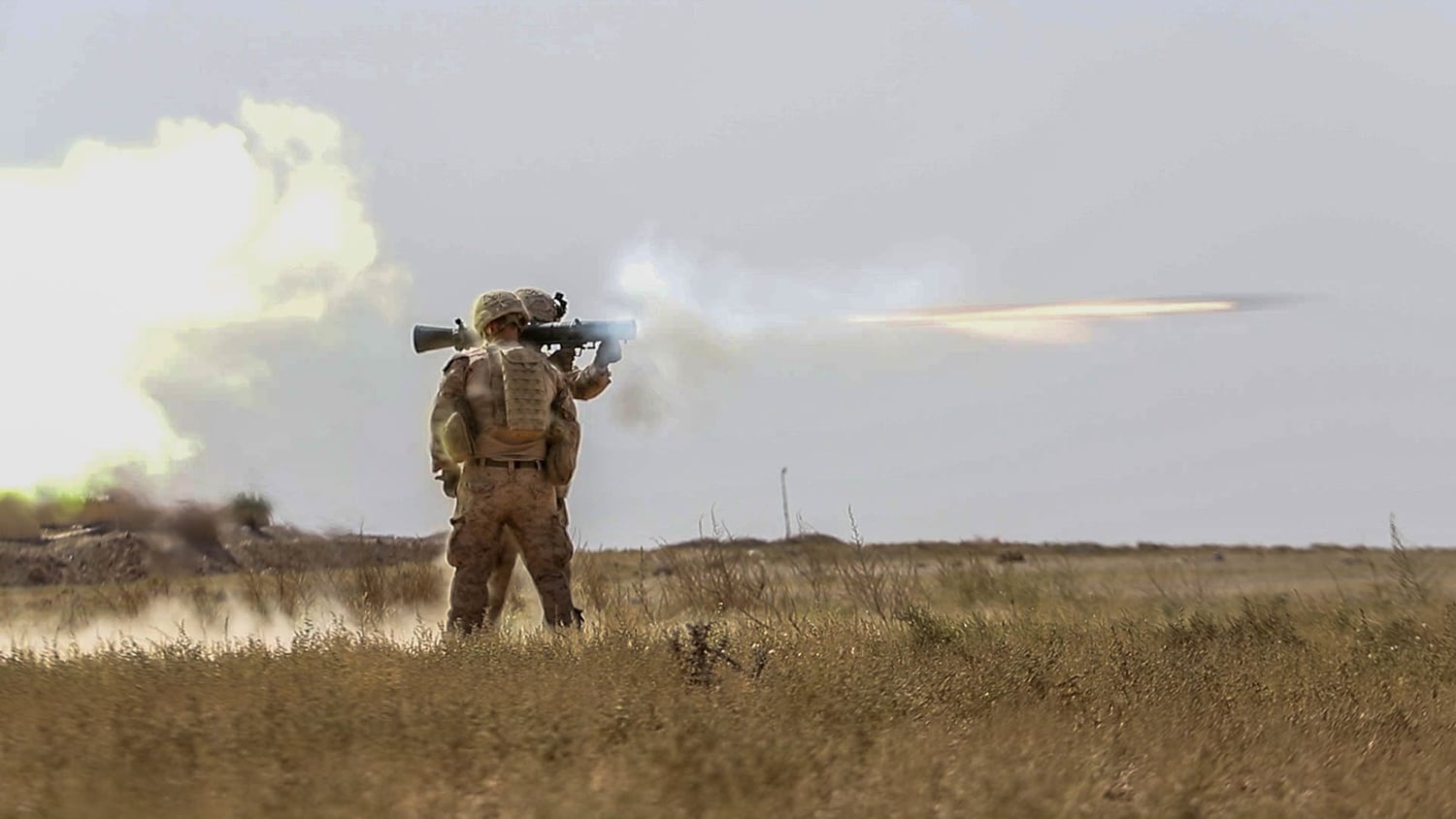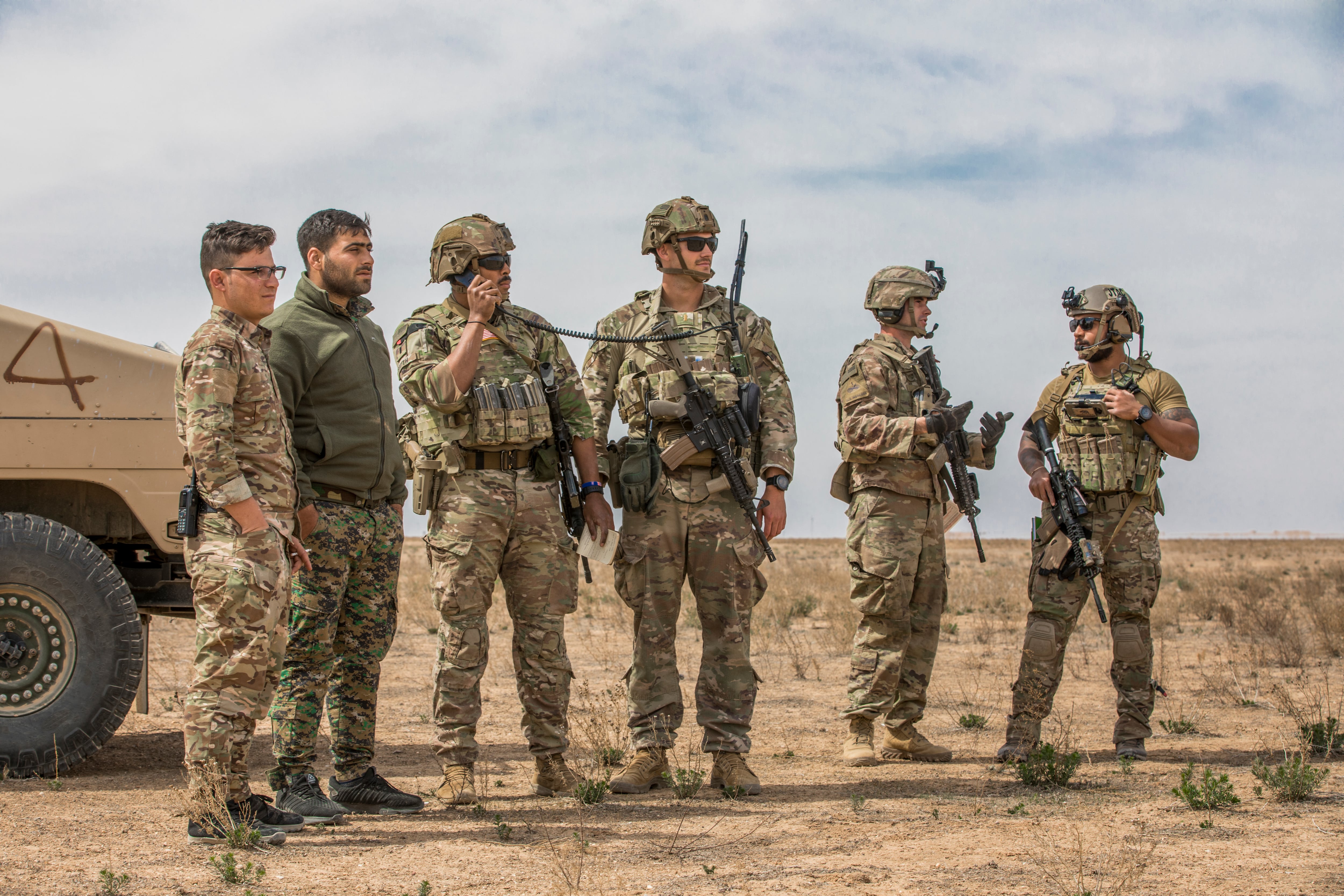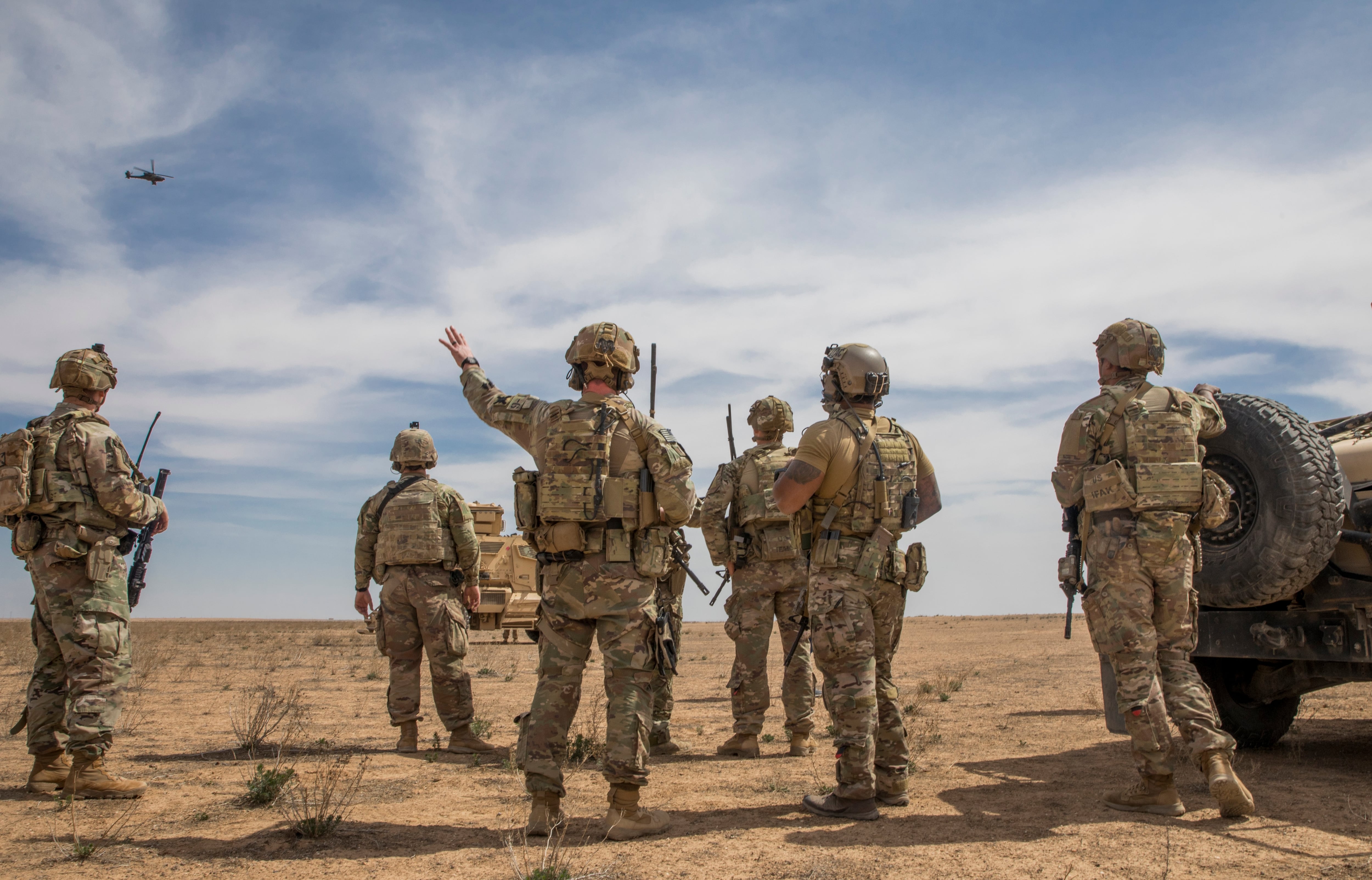Air Force JTACs trained Syrian fighters during a live-fire exercise with attack helicopters last month, catching the attention of online forums and highlighting a little-known part of the fight against the Islamic State that may foreshadow the future of air support in proxy wars.
The training, which was photographed March 20 and published on a Pentagon website, appears to be the first case of non-state actors receiving close air support training from JTACs, which could irritate actual nation-states opposed to the U.S. presence in Syria.
Syrian Democratic Forces have been the benefactors of U.S. training and military aid for years. Some SDF personnel have even been taught to help coalition JTACs coordinate airstrikes against ISIS. That skillset came in handy during intense urban warfare aimed at retaking ISIS-held cities over the past four years.
SDF weren’t trained to become JTACs themselves — a qualification that allows troops to direct close air support from a forward position. Instead, the SDF relayed information about enemy positions to JTACs who could actually approve airstrikes.
The effort reduces fratricide and civilian casualties, according to retired Master Sgt. Wes Bryant, a former Air Force special operations JTAC whose time running a strike cell against ISIS was the subject of his book, “Hunting the Caliphate.”
“In many respects you can say it’s not new — we’ve been relying on forward SDF reporting for remote strikes against ISIS for years now,” Bryant said. But it’s “definitely troubling” in other ways, he added.
Bryant pointed to the presence of Turkish, Russian, and of course Syrian government, forces in the region. Any capability offered to the SDF could be contentious.

Military commanders want to train local partner forces, and ISIS still has a presence lingering in Iraq and Syria. But whether there’s a solid strategy guiding the U.S. mission’s long-term goal in Syria is up for debate.
“As long as our people are deployed somewhere they are going to push to do whatever they can — yet with no strategic oversight or guidance from Washington,” Bryant said. “Or, really bad strategic guidance.”
Operation Inherent Resolve spokesman Col. Wayne Marotto did not answer any questions sent to him last week about the pictures.
Marotto would only restate what was in the photos’ cut-lines and said the training was designed to “increase the confidence of the SDF” in U.S. forces’ “support for them in Syria.”
It became obvious that SDF personnel were helping to coordinate airstrikes during the Al-Shaddadi offensive in 2016, according to Nicholas Heras, a senior analyst at Washington’s Newlines Institute for Strategy and Policy.
“It was used in other major battles: Manbij, and in particular, the Battle of Raqqa,” Heras said. “My understanding was there were at least 10, if not more, members the SDF who were trained in being able to work with a coalition buddy, if you will, to call in airstrikes.”
France 24 spoke with SDF personnel in 2016 who said they used Samsung tablets to plot friendly and enemy coordinates that were later shared with fixed-wing aircraft. A Rand Corporation study released early this year elaborated even further.

During the Raqqa campaign, some SDF personnel were given an app called the Android Team Awareness Kit for their tablets. The SDF could plot GPS coordinates on imagery that was pre-loaded onto the devices, as well as use chat apps and encrypted phones to pass information to JTACs at forward locations.
“[The SDF] would be on the ground talking to JTACs in a separate location through a translator,” one B-1 bomber pilot told Rand researchers. “And they would say ... I’m receiving effective fire from this building. ... And then that was translated. And then the American JTAC would actually be the one to control us.”
While the training was never a secret, it wasn’t advertised much. And the pictures posted by U.S. officials in March are also unique.
The pictures show SDF personnel using what appears to be a PRC-148 radio to coordinate live-fire weapons releases with an AH-64 Apache helicopter.
RELATED

“In the past it was always, you have the tablet, you have the radio, you identify the target to triangulate on the ground and then relay it to the coalition,” said Heras. “The [coalition] would have to check it and then you’d have an F-22 or F-15 drop the bomb on the target.”
“This current type of training seems much more dynamic and much more linked to close air support, which I find fascinating,” he added.
The photos were released, at least in part, with deterrence in mind, Heras said. Russian and Syrian government leaders have long sought the U.S. military’s exit from the northeastern part of the country, where U.S. troops work alongside their SDF proxies.

A controversial series of U.S. airstrikes left a number of Syrian government forces and alleged Russian mercenaries dead in Deir ez-Zor province in early 2018. U.S. officials claimed the cohort threatened U.S. and SDF positions in the area, which guard lucrative oil fields.
Heras thinks the message behind the March photos is two-fold. On the one hand, they’re intended to show that the counter-ISIS mission isn’t over and it’s being taken so seriously that JTACs are offering more training to the SDF.
“The more subtle message, which is to Russians and particularly [Syrian President Bashar] al-Assad, is ‘don’t test us,’” Heras added.
U.S. support to Syrian proxies has been controversial, especially when weaponry wound up in the hands of Al-Qaida-linked militants. But the training offered by JTACs isn’t of much use without U.S. aircraft, since the SDF don’t have an air force of their own.
Heras said Congress should still exercise its oversight role to learn more about the efficacy of the program.
“This particular type of support and training that the coalition provides the SDF actually does not have a lot of public debate,” Heras noted.
“If this is going to be part of a new American way of war,” he added, “where we allow non-state actors the benefit of a kinetic partnership that we would usually only reserve for closely vetted state actor partners, what does that mean about how we think about U.S. engagement in a future conflict and, in particular, in the so-called gray zone?”
Kyle Rempfer was an editor and reporter who has covered combat operations, criminal cases, foreign military assistance and training accidents. Before entering journalism, Kyle served in U.S. Air Force Special Tactics and deployed in 2014 to Paktika Province, Afghanistan, and Baghdad, Iraq.





